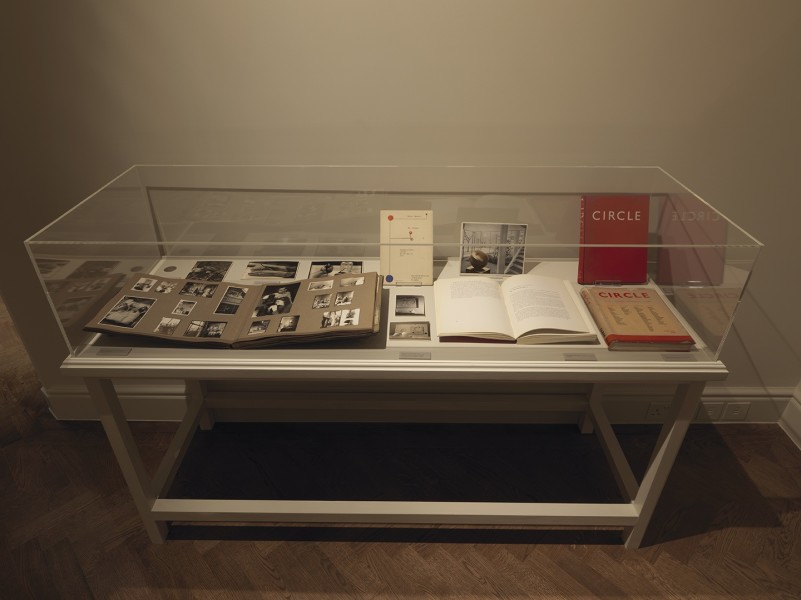“Barbara & I are the same…our ideas & our rhythms, our life is so exactly married that we can live think & work & move & stay still together as if we were one person.”
[Letter written by Ben Nicholson to his friend and patron, Helen Sutherland on 3 May 1932]
“Ben Nicholson’s work had a deep effect on me, opening up a new and imaginative approach to the object in landscape, or group in space, and a free conception of colour and form. It often happens that one can obtain special revelations through a similar idea in a different medium."
[Barbara Hepworth: Carvings and Drawings, Intro. by Herbert Read, Lund Humphries, 1952]
LONDON -- ‘Barbara Hepworth | Ben Nicholson: Sculpture and Painting in the 1930s’brings together over thirty works created by two of the most influential artists of the Twentieth Century. As the first ever loan exhibition to focus solely on this pivotal period in their careers, co-curated by their granddaughter Sophie Bowness and Professor Christopher Green of the Courtauld Institute, it presents sculpture, paintings and works on paper produced during this formative decade. The show contains work borrowed from major private and public collections, including Abbot Hall Art Gallery, the Courtauld Gallery, the Pier Arts Centre, the Sainsbury Centre for Visual Arts and the National Galleries of Scotland, and will feature rarely seen works from the artists’ family collections, as well as archival material from the Hepworth Estate.
The story opens in 1930, the year in which Nicholson begins his striking painting 1930-31 (charbon) −adistinctively British take on Cubism and completed the year that he joined Hepworth in Happisburgh, Norfolk, on holiday with artist friends. Both were still married at the time, Hepworth to the sculptor John Skeaping and Nicholson to fellow artist Winifred (née Roberts), but they quickly began a passionate love affair. This exhibition traces their relationship from this first holiday together to the end of the decade when they left London to live in St Ives in Cornwall and Nicholson completed his geometric 1940 (painted relief − version I). Hepworth is represented by nine sculptures, ranging from a tender portrayal in white marble of a mother embracing her child, to the beautiful Two Heads (1932) carved in Cumberland alabaster, and her more rigorously geometric sculptures, Two Forms (1934−5) and Form (1936).
Although largely based in London during the 1930s, Hepworth and Nicholson both spent valuable time visiting their artistic counterparts in Paris, absorbing new ideas and sharing their own views. Their quickly growing circle of friends encompassed some the most ambitious and radical modernists of the day, among them Picasso, Mondrian, Gabo, Arp, Taeuber-Arp, Brancusi, Miró, Kandinsky and Calder. The ongoing written and visual exchange fostered by Hepworth, Nicholson and these European artists is explored in further depth by Christopher Green in his introductory essay to the exhibition catalogue. Green also focuses on the personal and professional relationship between Hepworth and Nicholson throughout this decade by considering their art, letters and critical writing; asking how they looked at their work, how they displayed it privately and publicly, and how we can approach it today. The artists Giacometti and Braque stand out as two individuals of particular interest to the couple at this time. A rare, early plaster by Giacometti is also included in the exhibition, purchased by Ben’s first wife, Winifred, in around 1936.
‘Barbara Hepworth | Ben Nicholson: Sculpture and Painting in the 1930s’ tells the story of this highly productive and defining period for the artists, both romantically and creatively. Marrying ideas introduced by new friendships nurtured in Paris with their own radical outlook, the show reveals the valuable partnership shared between two highly individual artists that would help to define the course of Modern British art.
“The exhibition reunites works created by Hepworth and Nicholson alongside one another in the studio-home they shared in London during the 1930s. This was a centre of the international avant-garde in these years. The opportunity to see sculptures and paintings juxtaposed, some for the first time since they were created, is an exciting one."
Sophie Bowness








